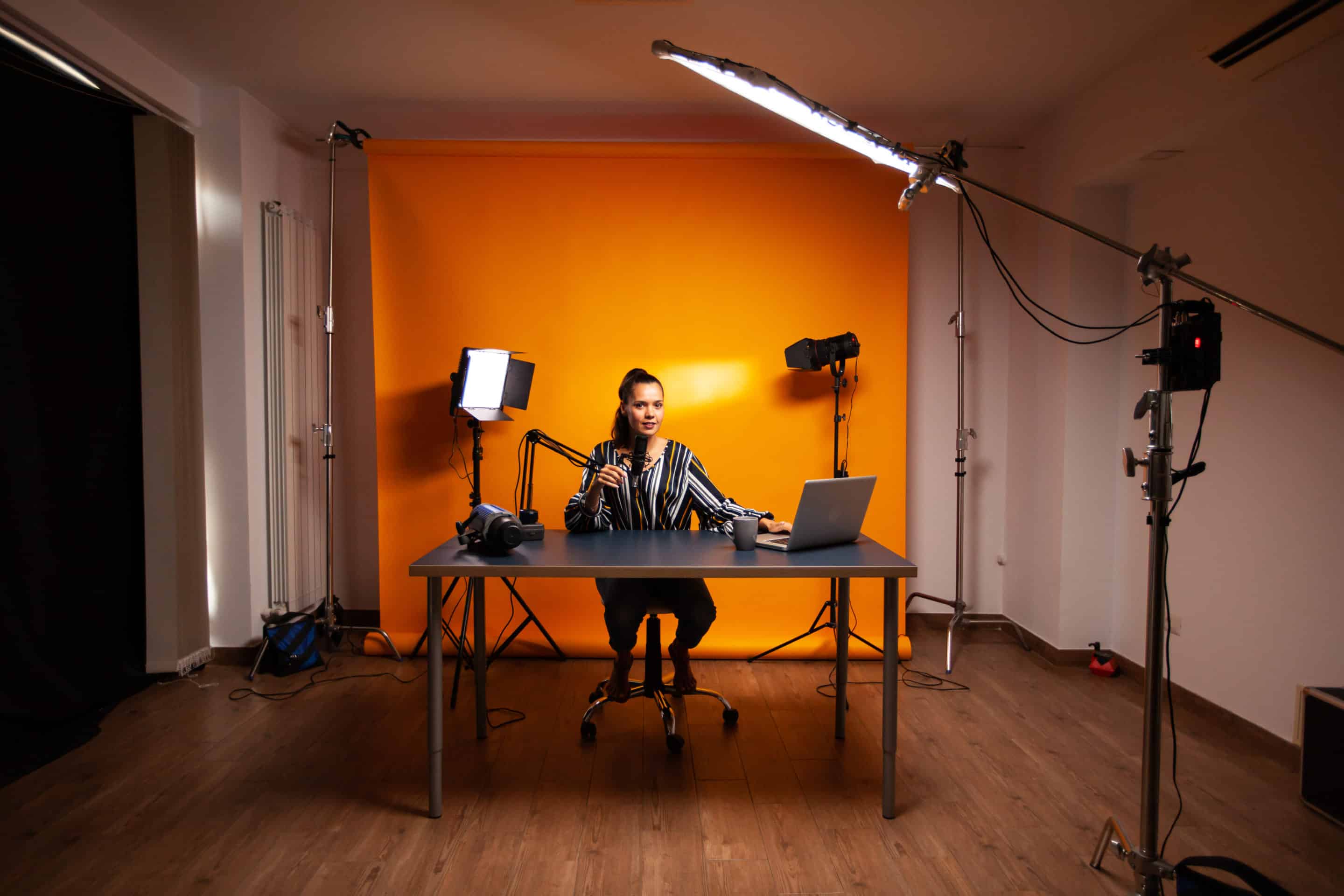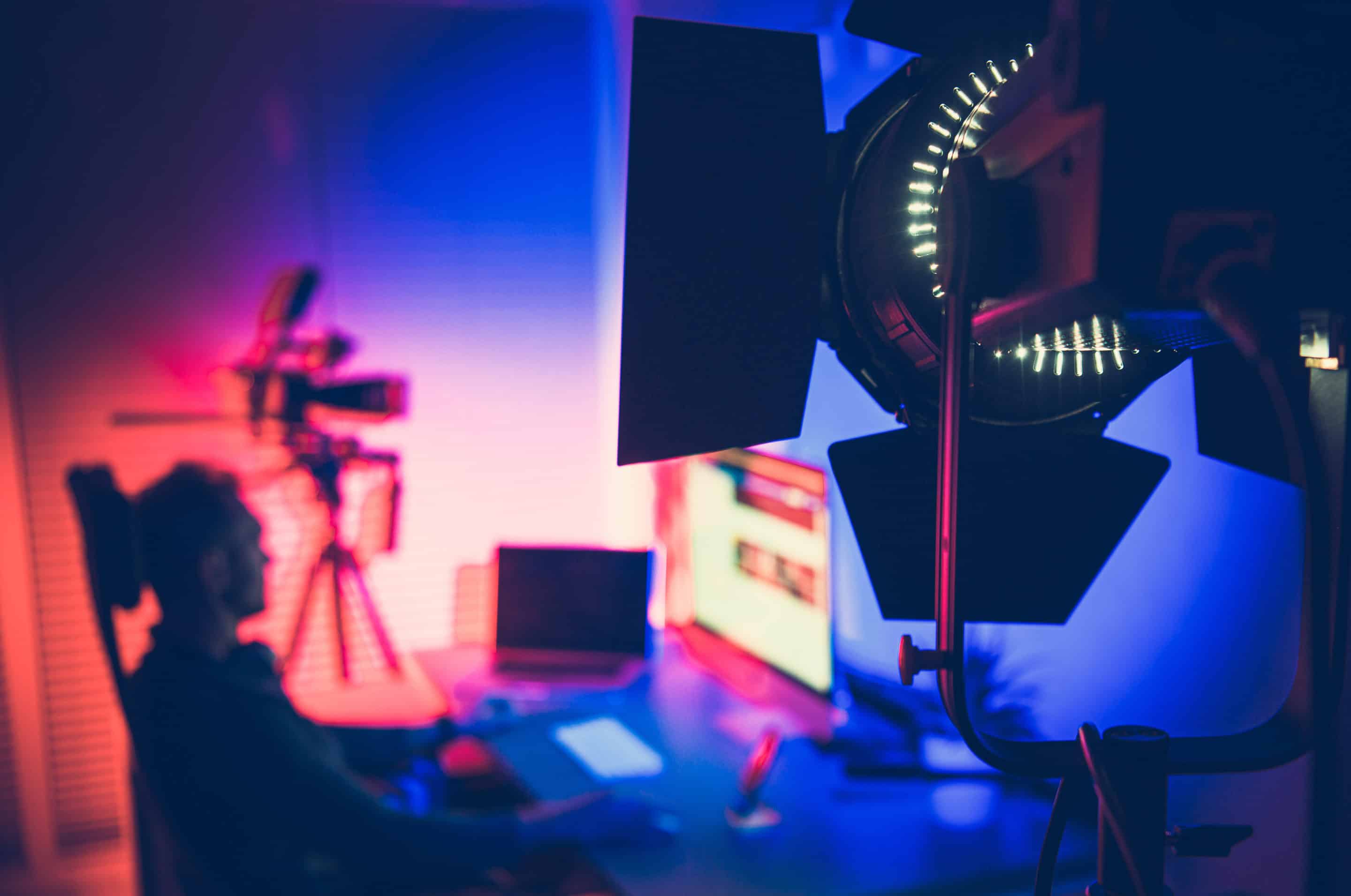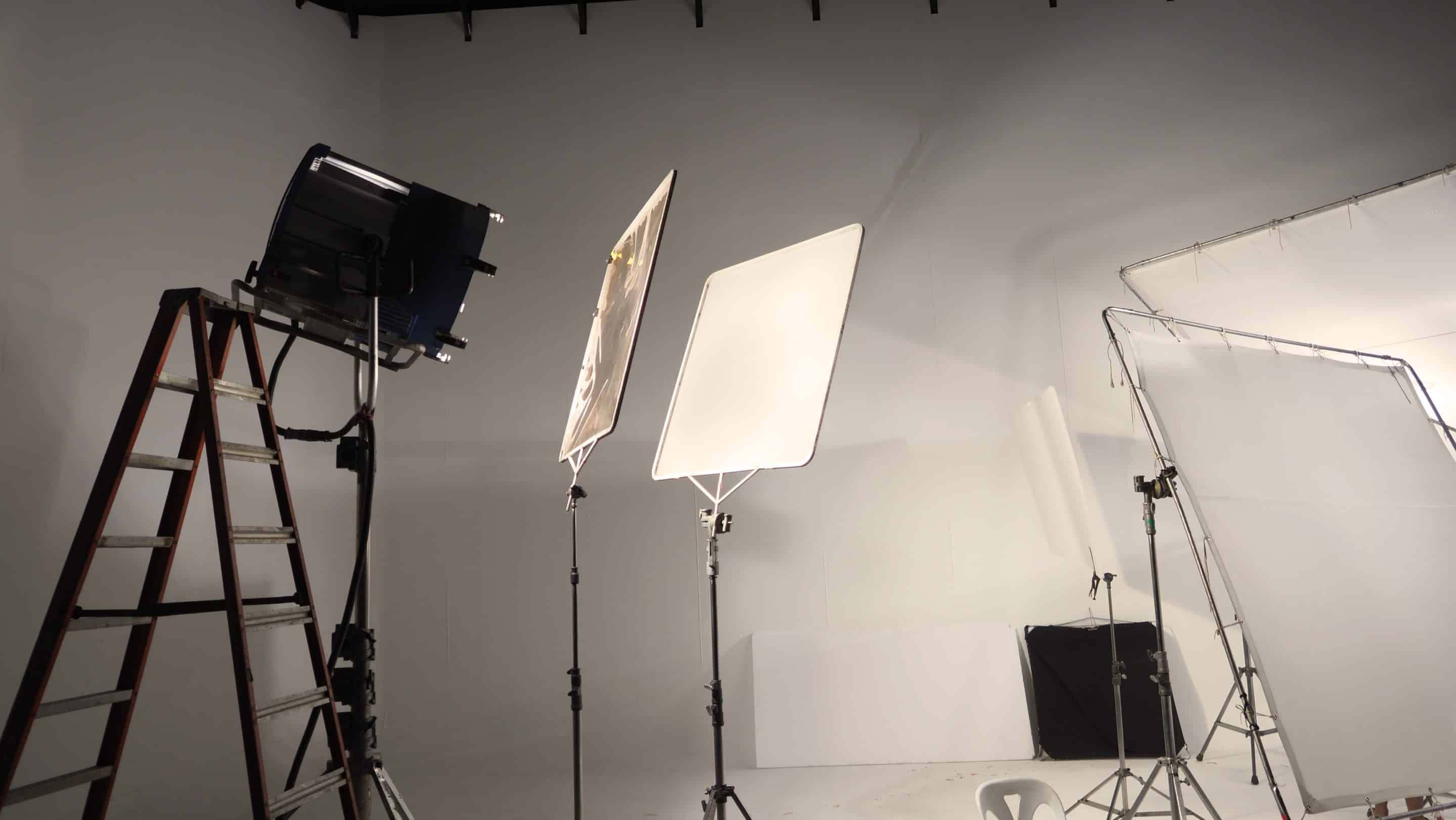A guide
How to speak on camera
Here’s a quick guide to looking your best in front of the camera.
I advise you to go to the table of contents in order to quickly solve your problem.
Let’s start!
Objective
The main goal you need to keep in mind during this process is to effectively convey your message to your audience in a natural, authentic and confident manner, which will allow you to engage them. The first result is that they will finish watching the video, take action and, ideally, share the video with their loved ones.
10 things to consider when speaking on camera
Contact with the eyes
Where should I look? This is the first question we ask when we are in front of the camera. And the answer is: it depends.
If your video has an interview format, chances are you have an interviewer. To whom you should maintain eye contact. Avoid looking at the camera, as this will give the viewer a strange feeling.
If your video is a “Piece to camera” (PTC) format, you should ideally have constant eye contact with the camera lens, which doesn’t mean you can’t break eye contact. The ideal is to simulate a normal conversation, where your contact is mainly with the eyes of the person you are talking to, but where from time to time you look around to remember or gather your thoughts.
Facial expression
Body language, anything you can convey without words, is an amazing thing. According to Albert Mehrabian, in the communication of emotions and feelings, whether with your body or mainly with your facial expressions, it has a responsibility of 55% in communication.
This is most noticeable in stressful situations where many involuntary reactions flourish.
That is why it is necessary to have an active and positive attitude, in order to communicate our message. We want the viewer to remain attentive to the message we are conveying. That’s why highlighting certain phrases will help you convey the emotion of your message. All this without exaggerating, because the overacting is perceptible.
Body expression | Posture
What is the best position/posture to shoot a video?
The position in which you are comfortable, whether you are more comfortable standing or sitting, is totally personal. The same goes for leaning on a table, having a table in front of you to lean on, or even walking or moving while talking.
Not to mention having good body posture, the most important thing is that your body language is as natural as you are, because if you are not comfortable, you are conveying discomfort.
You can use your body language to accentuate things, such as something big or small, by gesturing with your hands, which helps a lot to change the monotony and emphasize the important things you mention.


Attack the beginning, the tone of voice.
A common mistake made by beginners is to start a sentence with a lot of energy and then to deflate as the sentence progresses until the end when you can’t hear anything, or even the opposite situation.
That’s why we recommend having an energetic beginning to keep your viewer awake, as well as a good final tone, maintaining the volume and intent of the message.
Pace | Highlighting of important words
The paraverbal language (intonation, projection, tone, emphasis, pauses, rhythm, etc.) will help guide the viewer to where they need to pay more attention and care. That’s why if you have a normal conversational rhythm and you suddenly make a super long word, you are usually emphasizing the importance or even the size of the object you are referring to.
WARNING: There is a technique called “pattern break”, which consists of making the viewer fully aware of what you are going to say right after the “pattern break”. So if you speak normally and then stop speaking, you have broken the pattern you had, which generates a state of alertness in the viewer. This way, anything mentioned after this break will get more attention from your audience.
Variety
A common mistake is to fall into patterns that keep us comfortable, both verbally, using the same words, and in our physical gestures. As in our physical gestures, so having a variety of movements and words to connect sentences will help us appear more natural.Variety is the spice of life.
130% more energy
Even if it seems a little awkward, you need to give it 130%. Because this energy will keep the viewer constantly curious about how this video ends.
Practice, but don’t overdo it
If you’re not doing a live video, you have the advantage of doing multiple takes, even sentence by sentence. This gives you the great advantage of being able to observe and improve continuously. But don’t overdo it, leave some energy for the final video.
Don’t imitate, be you!
We all have different personalities and we can have an incredible impact on our specific audience, as long as we are truly transparent about our intent and message. But there is nothing more counterproductive than trying to copy others, it’s something everyone notices and it doesn’t do you any good, it’s not you, it doesn’t feel natural.
That’s why we encourage you to bring out the best in your authentic self.


Bonus
Drink water and avoid dairy products
Staying hydrated and avoiding dairy products will give you a better tone of voice and help you avoid obstructions that make you cough or feel like coughing.
Avoid fidgeting
Some nervous people make repetitive, involuntary movements that communicate a state of stress and insecurity to the audience.
Discussion points
If you want to avoid reading the script, one solution is to make a list of important talking points that you will develop gradually as you go along. This is a quick and easy way to develop a scenario.
Record your message, then create your script
The most important thing is the message you want to get across, so a good technique is to record yourself explaining everything you have in mind, and then create a script on that video. This will make the way you explain your message much more natural, while speeding up the script writing process.
Exercises before speaking on camera
Breathing exercise
This exercise consists of mentioning the letter z as long as possible until you run out of air, repeating 3 times before recording, which always helps you breathe more deeply.
Vocalization exercise
Reading a short text aloud very quickly or even the script in an exaggerated way in terms of tone and modulation, allows to warm up, to relax and to gesticulate the whole vocal cords and the associated muscles.
Conclusion
Speaking on camera is a skill that anyone can develop. It takes a lot of practice and study to get good at it, but there’s nothing to stop you from getting there if you’re motivated and disciplined.
This guide is an excerpt of what we considered important before making a presentation and/or recording a video, so we decided to put it on paper. As these are some of the tips we give to our clients on a daily basis, we invite you to leave a comment.
We invite you to leave a comment on how you found this guide and even better if you can mention something that helps you deal with the camera.
